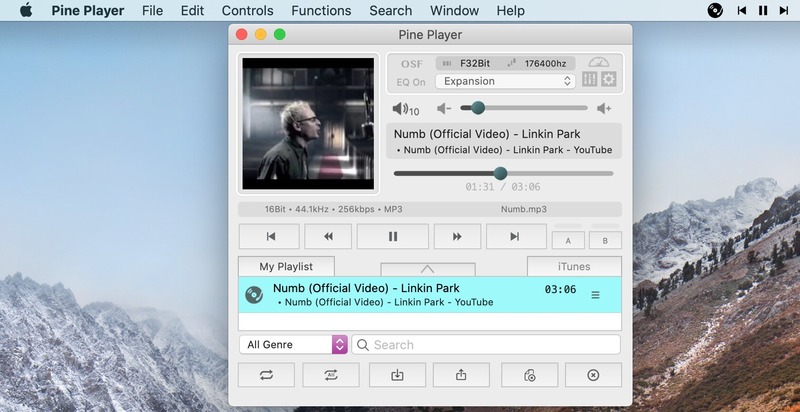

'Re-alpine 2.03 release (late but still)'.

Pine player mac license#
This is apparently a bug in the Terminal app'shandling of applescript.Īlpine is licensed under the Apache License (version 2 - November 29, 2006), and saw its first public alpha release December 20, 2007. term files may not work until the Terminal app has been quit and restarted. I haven't implemented that yet, so your Pinesession will inherit whatever your default Terminal.app settings are. It should be possible to configure terminal settings such as font size,colors, width and height, etc.In the current verions (1.4.4) printing to attached-to-ansi results in the message being sent directly to the default printer, bypassing any option to change the layout or other printer options. It should bepossible to print to your local printer using the 'attached-to-ansi' printer configuration, but that's handled by Apple's Terminal application, and didn'twork in some versions. Unlike PC-Pine, there's no way to configure print settings.Download the installer above to stop MacPine from complaining about certificate problems. MacOS X doesn't come with SSL certificates, or if it does, I can't find them.If /var/tmp isn't periodically cleaned out, it may fillup. Pine doesn't appear to clean up the temporary files it uses for attachmentviewing.
Pine player mac code#
Pine doesn't seem to check the return code of the application called to view an attachment, so if you try to view an attachment that opencan't handle, it will fail silently.build 'EXTRACFLAGS=-DPASSFILE='.d' osx Known Issues The pine binary itself was built from source which has had two patches applied to it, in order to:The build command was:
Pine player mac password#
What's more, while the password is cloaked by a mild (some might say, feeble) encryption scheme, it is nonetheless sitting in a file on the disk and subject to cracking by anyone with access to it. The Pine documentation has this to say about this feature: WARNING! Turning this on is very dangerous and should probably not be done, except on single user systems! Use this feature with caution! It effectively makes the user's mail no more secure than the physical security of the machine running Pine. To have MacPine save your passwords, launch the Terminal application and type these commands: touch ~/.dĬhmod 600 ~/.dAfter that, any time you have to enter a new password in MacPine, it will ask if you want to save it for later use. But PC-Pine has this feature enabled, so I enabled it for MacPine.

I personallydo not recommend using this, as your password is insecurely stored in an obfuscated but not encrypted format on the disk. This build of pine has password cache support enabled. Alpine is meant to be suitable for both inexperienced email users and the most demanding of power users.Alpine can be learned by exploration and the use of context-sensitive help. Alpine is a rewrite of the Pine Message System that adds support for Unicode and other features.
Pine player mac software#


 0 kommentar(er)
0 kommentar(er)
